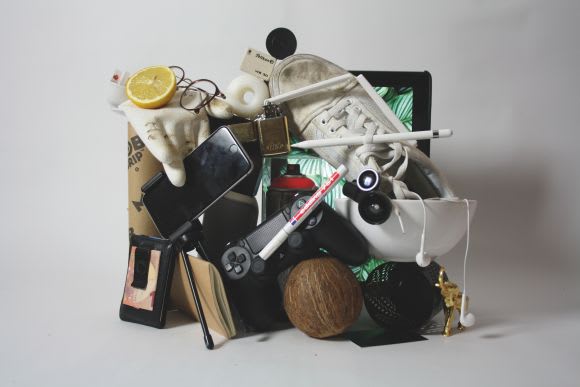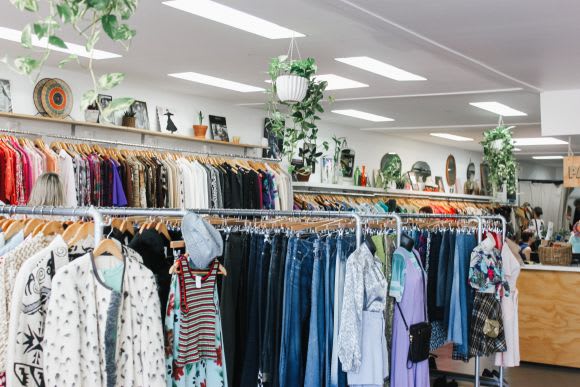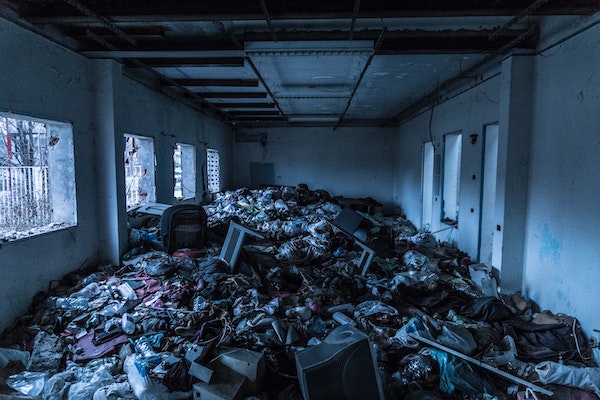Decluttering experts share effective downsizing advice for apartment living
Downsizing to apartment-living is growing in popularity due to housing affordability and the attractive low-maintenance living on offer. The Australian Bureau of Statistics 2016 survey found there was around one occupied apartment for every five occupied houses in Australia, compared to one for every seven back in 1991. The dramatic shift is also prevalent across the board with families, retirees and first home buyersshowing an increased demand for apartment living.
In 2016, the census also showed a 56% increase since 2011 in families with children living in high-rise apartments across Australia. The Australian Housing and Urban Research Institute also found 43% of Australians aged 50-59 have opted for a smaller dwelling or different location as they neared retirement.
THESE TRENDS LEAD US TO QUESTION, WHY THE SHIFT?
Soaring house prices
The affordability of new apartments greatly outweighs the cost of detached dwellings. The price combined with community-centric living, premium amenity and low maintenance modern design, makes opting for a smaller scale home a smaller price to pay, literally.
Preference shift
“People are busier than ever and a big house on a large lot means more upkeep. People are eating out more, participating in more cultural activities and drawing on more health and community services. As a result, families are trading private space for better access.”
– SGS Economics & Planning, The changing face of apartment living
SO IT’S TIME TO DECLUTTER, BUT WHERE TO START?
For those looking to downsize their home for apartment living, you’re going to need to know where to begin the decluttering process. We reached out to three decluttering and home organisation companies to find out their top tips for the monumentous task ahead of many Australians.
FIRSTLY, WHAT ARE THE THREE GOLDEN RULES ARE FOR EMBARKING ON THE DECLUTTERING PROCESS?
Lynne Trevail from Unstuff:
- Firstly, declutter before you move.
- Start in a non-emotional area to begin the process. Bathroom and kitchen are good starting points.
- Only work in a small area to begin. One drawer at a time. Overwhelm happens when you contemplate the whole house!
Susan Williams from The Finishing Touch:
- Set aside a block of time to declutter with a distinct start and finish time. Ideally, declutter when other members of the household are out. Kids in particular always show renewed (brief) interest in anything you plan to give away or throw out.
- Have a specific goal in mind and a plan to achieve it, ie clear out and reorganise wardrobes, tidy garage or sort and tidy kids toys. If this involves any new equipment like coat hangers or storage containers, purchase them before you start so you can complete the entire task in the time you have allocated.
- Be realistic. Separate, small projects will be achievable and satisfying. Expecting to complete the whole house in a day is not and will leave you disheartened.
Lee Hamlin from MOVINGHOUSE:
- Start early – slowly assess your actual needs for your lifestyle by going through room by room.
- Stop buying when you decide to downsize.
- Measure all furniture you wish to take to your new home and make sure it fits into the spaces (draw up a floor plan)
WHAT IS THE BEST WAY TO DECIDE WHAT TO KEEP AND WHAT TO PART WITH?

Lynne from Unstuff suggested following Marie Kondo’s advice by asking yourself, “Does it give you joy?” to each item you have not used in the last year.
“Does it serve any purpose? If not it is probably time to let it go.”
Susan from The Finishing Touch also shared a good technique for identifying which clothes you should keep, and which are ready to go.
“With clothing, if you are unsure, turn all your coat hangers around to the opposite way to normal, then when you wear an item, turn the coathanger around. If after 6 months, or a season you haven’t worn the garment (so its hanger is not turned), then you no longer wear or need that.”
Lee from MOVINGHOUSE creates an inventory of each room at a time, using three columns:
(a) Keep – things you absolutely know you need.
(b) Items you could live without – ask yourself would you replace these if there was a fire.
(c) Replace/Sell – these things can be donated, sold or stored.
WHAT ARE SOME INNOVATIVE WAYS TO STORE SENTIMENTAL ITEMS?

Sentimental items are the most challenging to part with as they are more than just an inanimate object. Instead, they have feelings, emotions and memories attached to them and sometimes there are items we just can’t say goodbye to – especially when it comes to photos and family heirlooms.
Lynne from Unstuff explains that rather than colour coding and alphabetising documents and photos, the most important thing is that the items are easily accessible.
Another great idea is digitising physical photographs and storing them on a cloud-based platform.
“This is great for photos, school paintings, special documents. Many online companies can assist with this and create beautiful digital keepsakes for you, or you could photograph and store them yourself. Then you can just physically keep the most special items.”
– Susan Williams, The Finishing Touch CEO
Susan also suggests putting sentimental items on display so that you can enjoy seeing them on a daily basis.
However, if you do have items which need to be stored in a cupboard, Lee from MOVINGHOUSE suggests using plastic containers so you can see what’s inside, and to also make sure they are clearly labelled.
SHOULD YOU KEEP SOMETHING OF VALUE IF YOU DON’T PARTICULARLY LIKE IT, IN CASE IT INCREASES IN WORTH?
A common response when you ask a family member why they’re keeping something is, “It’s worth a mint!” or “It’ll be an antique one day”, which is not exactly what you want to hear when you’re decluttering. The best way to solve this is to deal with the item immediately by taking it to get valued, or assessing whether it’s cost-effective to put it in storage.
“If it takes up space you don’t have, then it may have to go into a storage facility, that can cost you thousands of dollars. Save yourself money by getting rid of it now. If it’s costing you money, it is losing value instantly.”
– Lynne Trevail, Unstuff
Susan from The Finishing Touch also concluded that insurance and storage costs may outweigh the possible increase in value. And if your big ticket item sells, Lee from MOVINGHOUSE suggests using the money for something you really need or taking a holiday!
SO WHAT IS THE MAIN REASON PEOPLE SEEK ‘DECLUTTERING’ SERVICES?
Lynne Trevail from Unstuff: Overwhelm. People try and declutter in one go, and they become confused. Indecision stops items leaving the home, so they call for professional assistance.
Susan Williams from The Finishing Touch: Many people come to the realisation that they need or would like some help to declutter their homes for lots of reasons. Some put it off unless they have enlisted professional help, many people don’t have the time to declutter themselves, or like the assistance of professionals who are independent in their assessment on what you should keep, and are also experts at organising.
Lee Hamlin from MOVINGHOUSE: We offer unbiased, upbeat support in decision making, motivating the client and offering emotional support during the process. Occasionally clients seek our help after moving, they are usually distressed and they wish they did downsize prior to the move.
HAS ANYONE EVER ACQUIRED YOUR SERVICES RIGHT AFTER MOVING INTO A NEW HOUSE/APARTMENT AND DECIDING THEY HAD BROUGHT TOO MANY POSSESSIONS?
Lynne Trevail from Unstuff: It does happen. Again indecision stops them getting rid of items before they move. Waiting until they move becomes a procrastination technique.
Susan Williams from The Finishing Touch: We are frequently asked to assist people who have moved into their new home and realised they need to declutter or risk filling their beautiful new home with too many belongings. This is because sometimes people are not very organised before their move and end up having to pack everything to transport, rather than having the time to cull and sort before they pack up their home. It’s far better to declutter before moving as you save on transportation of items you are not going to keep and are far more efficient in your unpack.
SO WHERE DO ALL THE DISCARDED GOODS END UP?

We were pleased to hear that all companies follow a sustainable approach where if the item is in good condition, it’s donated to charity. If not, then it’s recycled. Other options include donating to specific charities, listing items on eBay or gumtree, visiting an auction house or holding a garage sale.
“Decluttering in Winter is a good time as they can participate in the national Garage Sale Trail in Spring and the hard rubbish collections around that time. Plus it’s a satisfying way to spend a cold, wet day indoors.”
– Susan Williams, The Finishing Touch CEO
FINALLY, ONCE YOU’VE DECLUTTERED, WHAT IS THE MOST EFFECTIVE WAY TO ORGANISE YOUR WARDROBE?

Susan Williams from The Finishing Touch suggests dividing your clothes into Winter/Summer, Formal/Casual or arrange by colour, and to utilise most of your wardrobe space for items you wear currently while saving a small section for pieces you can’t let go of any items you’d like to sell.
Lee Hamlin from MOVINGHOUSE encourages clients to ask themselves, “Does it fit?” “Have you worn it in the last year?” “Do I feel good in this?” and suggests using hanging shoe storage, matching hangers and folding knitwear.
And Lynne Trevail from Unstuff has one simple rule to follow,
“If you are buying new clothes, work on the adage, one in, one out. That way you stop your wardrobe exploding.”
Thank you to the Susan Williams CEO at The Finishing Touch, Lee Hamlin Director of Moving House Pty Ltd and Lynne Trevail at Unstuff for your great advice.



